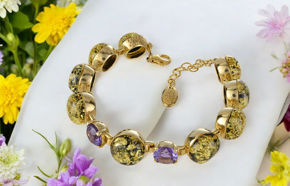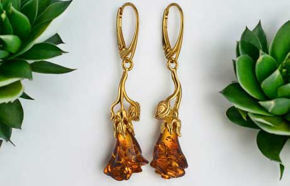
Amber is a fossilized resin that is found in many different colors, ranging from deep yellow to reddish brown. It is often used in jewelry and other ornamental objects. Amber is formed when tree resin is fossilized by the action of heat and pressure. The most common type of amber is called Baltic amber, which is found in the Baltic region of Europe. Other types of amber include Dominican amber, which is found in the Dominican Republic, and Chinese amber, which is found in China. Amber has been used for centuries for its beauty and unique properties. For example, amber is said to have healing properties and to be able to absorb negative energy. Amber is also thought to be a lucky charm that can bring good luck to those who wear it.B. Why do bugs get stuck in amber?
For anyone who's ever been intrigued by a bit of amber jewelry, the appeal is obvious - it's beautiful, unique, and full of history. But for scientists, amber also holds a wealth of information about ancient ecosystems. Because amber is a type of fossilized tree resin, it often contains preserved plant and animal material, from leaves and pollen to insects and spiders. This gives us an unprecedented glimpse into the plants and animals that existed in a particular ecosystem millions of years ago. In fact, some of the most important discoveries about prehistoric life have been made thanks to amber. So next time you're admiring a piece of amber jewelry, take a moment to appreciate the scientific value of this fascinating material.

For many of us, amber is little more than a pretty gemstone. But for scientists, amber is a time capsule that can provide insights into the distant past. For example, by studying the insects trapped in amber, researchers have been able to learn about the evolution of different species. In some cases, amber has even provided clues about long-extinct animals, such as dinosaurs. In addition, amber can give us information about prehistoric climates and environments. By studying the plant life preserved in amber, we can learn about the types of plants that were present in different areas at different times. And by studying the chemical composition of amber, we can learn about how atmospheric conditions have changed over time. In short, amber is a valuable tool for understanding our planet's history - and who knows what secrets it may yet hold?
When it comes to endangered species, we usually think of exotic animals like tigers and elephants. But what about the smaller creatures that are just as threatened? Insects make up the vast majority of animal life on Earth, and many of them are in danger of extinction. One way to help preserve these creatures is by collecting amber. Amber is fossilized tree resin, and it often contains perfectly preserved specimens of insects that lived millions of years ago. By studying these ancient specimens, scientists can gain insights into the evolution and ecology of modern-day insects. And with the rapid decline of many insect populations, this research is more important than ever. So next time you see a piece of amber for sale, remember that it's not just a pretty trinket - it's a valuable scientific resource.

Throughout history, amber has been revered for its beauty and used in a variety of ways. Today, it is still cherished as a precious gemstone, but its potential uses go far beyond jewelry. Scientists have discovered that amber can absorb and store electrical energy, making it a promising material for use in batteries and other energy-related applications. Additionally, amber has unique optical properties that make it ideal for use in optics and optoelectronics. And due to its high thermal conductivity, amber could also be used in thermal management applications. As research into the unique properties of amber continues, it is likely that even more innovative uses for this fascinating material will be discovered.
So the next time you’re wearing amber, remember that you have a piece of history on your wrist or around your neck. And know that it has the potential to help us save endangered species and develop new technologies in the future. Amber is truly amazing! Have you ever wondered what your necklace or bracelet was made of? It might be amber! This fascinating material can tell us a lot about the past. For example, we can use it to study extinct insects and animals. But amber also has many potential applications for the future. We should continue to study amber and its many potential uses so that we can make the most of this valuable resource.












